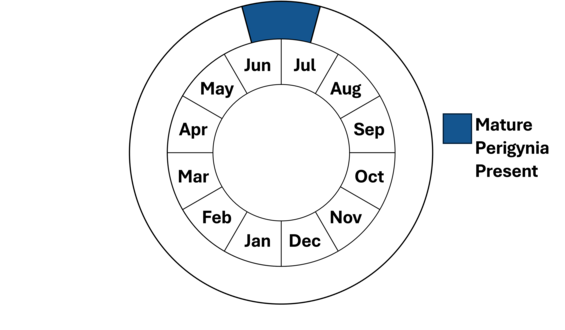- Scientific name: Carex gracilescens
- Species of Greatest Conservation Need (MA State Wildlife Action Plan)
- Endangered (MA Endangered Species Act)
Description
Slender woodland sedge is a perennial member of the sedge family (Cyperaceae) found in rich deciduous woods. It grows in dense tufts, with stiff leaves that are shorter than the 20-80 cm (8-31 in) flowering stems. The common and scientific names of this species refer to its narrow leaves, which are 3-8 mm wide. To identify slender woodland sedge and other members of the genus Carex, a technical manual should be consulted. Species in this genus have tiny flowers borne in spikes. Slender woodland sedge is a member of Carex section Laxiflorae, which includes several upland forest species that have a terminal staminate spike and two to five stalked, erect or nodding, pistillate spikes. The smooth perigynia are obovate (widest toward the tip) with untoothed beaks. The bract below the lowest pistillate spike has a closed sheath that is usually longer than 4 mm (0.16 in). Slender woodland sedge is one of several members of section Laxiflorae that have obscurely three-sided rather than sharply three-sided perigynia. It is unique among these in having the combination of purplish basal sheaths, leaves less than 1 cm (0.4 in) wide, angles that are rough on the upper part of the flowering stem, and crowded perigynia. Its many-veined perigynia have short (less than 1 mm [0.04 in]), abruptly bent beaks, and there are four to twelve perigynia per spike.
Woodland sedge (Carex blanda) and loose-flowered woodland sedge (C. laxiflora) are common species that are similar to slender woodland sedge, but are brown at the base rather than purplish. Two other members of Carex section Laxiflorae in New England have purplish bases. White bear sedge (C. albursina) has very broad leaves (10-52 mm; 0.39-2.05 in) and winged flowering stems that are at least 2 mm (0.08 in) wide. Carex ormostachya, like slender woodland sedge, has unwinged or obscurely winged stems that are 0.5-2 mm (0.02-0.08 in) wide, but its leaves are longer than its flowering stems. Slender woodland sedge also has shorter pistillate spikes, more crowded perigynia, and angles on the upper portion of flowering stems that are rough rather than smooth.

Population status
Slender woodland sedge is listed under the Massachusetts Endangered Species Act as endangered. All listed species are protected from killing, collecting, possessing, or sale, and from activities that would destroy habitat and thus directly or indirectly cause mortality or disrupt critical behaviors. Slender woodland sedge has been documented from Middlesex County but has not been observed in recent years. This species is at the northeastern limit of its range in Massachusetts.
Distribution and abundance
Slender woodland sedge occurs throughout the eastern United States and in Ontario, Canada.
Habitat
Slender woodland sedge occurs in rich, rocky woods along streams and in other shaded, moist woods.
Healthy habitats are vital for supporting native wildlife and plants. Explore habitats and learn about conservation and restoration in Massachusetts.
Threats
Forest clearing or other drastic habitat alterations would likely threaten existing populations, as this species is only known to occur in wooded areas.
Conservation
As for many rare species, detailed management needs for slender woodland sedge are not known. All active management of rare plant populations (including invasive species removal) is subject to review under the Massachusetts Endangered Species Act, and should be planned in close consultation with the MassWildlife’s Natural Heritage & Endangered Species Program.
Contact
| Date published: | April 9, 2025 |
|---|